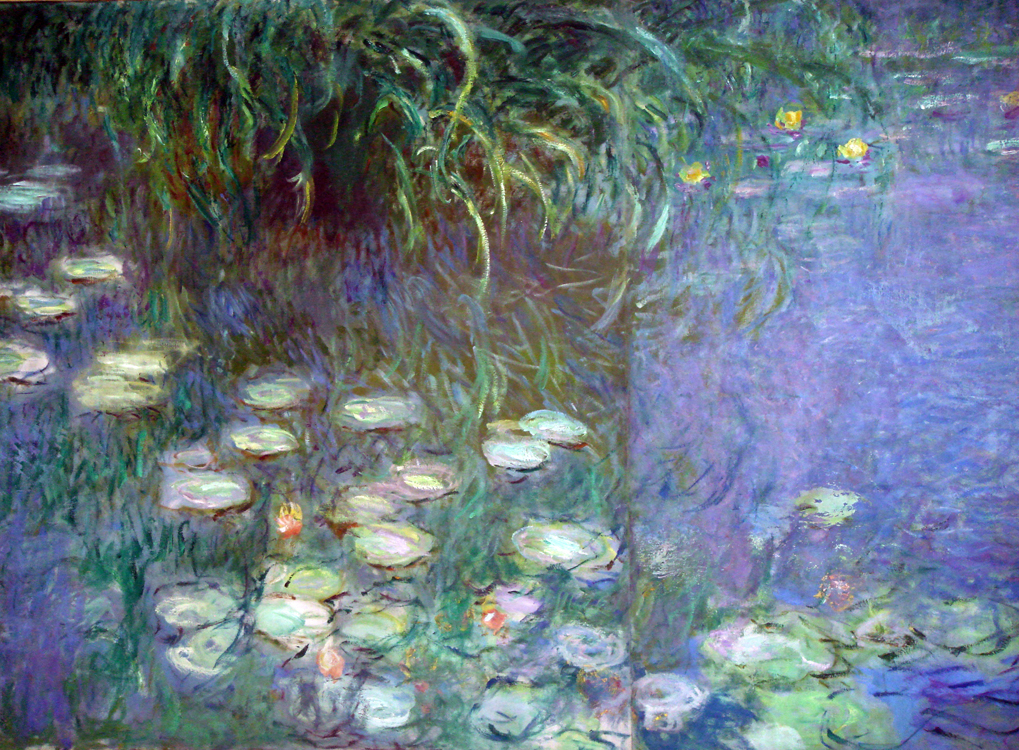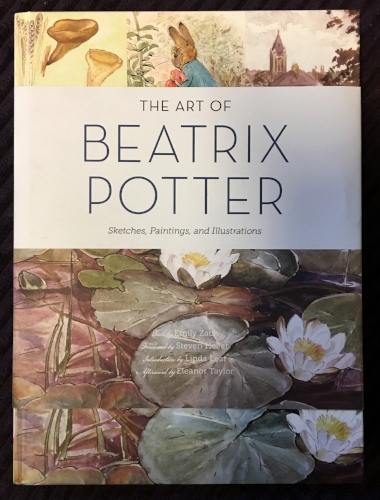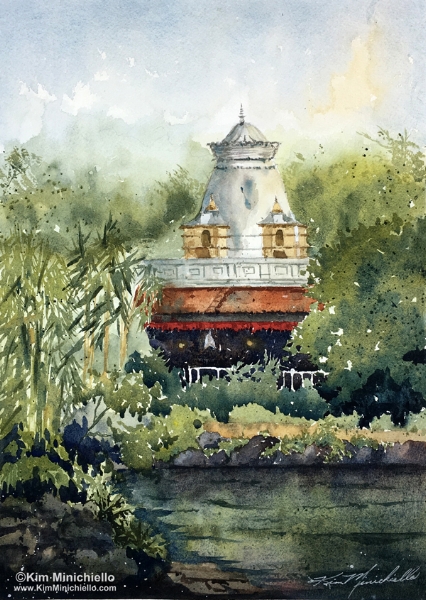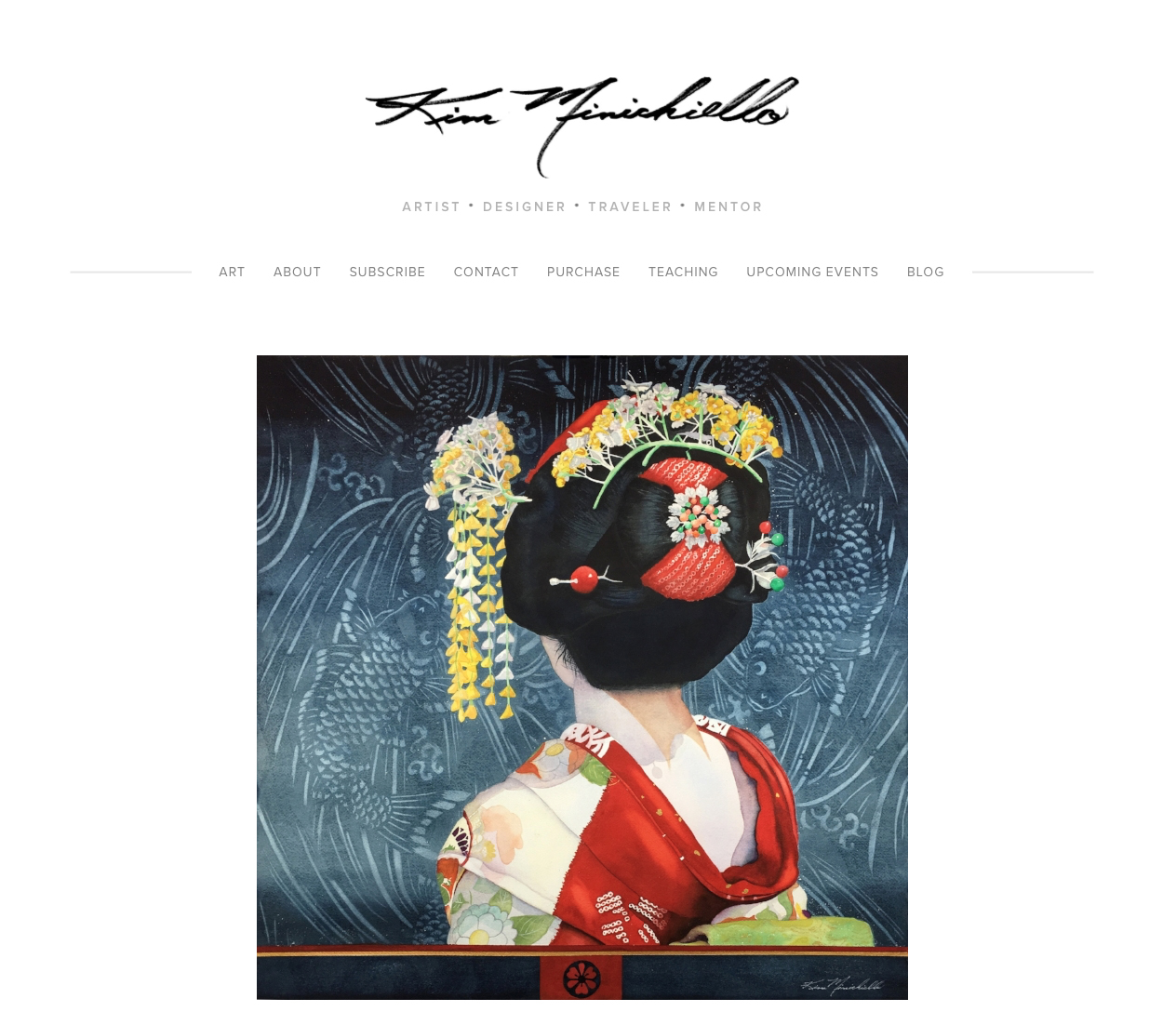Today I’m posting the second part to a previous blog post about Claude Monet and the book Mad Enchantment: Claude Monet & the Paintings of the Water Lilies, continuing my blog series on Monet, Giverny, and Other French Musings.
As mentioned in my previous post, the Museé Claude Monet a L’Orangerie des Tuileries had opened to little fan fare, which was perplexing since Monet had become one of the most well known, and collected artists of his time. His long time friend, Georges Clemenceau, noted bitterly that a sign announcing a dog show in another part of the building was much more prominent than the one announcing the inauguration of the Museé Claude Monet in May of 1927, just five months after Monet’s death.
It was as if France had turned on Monet. France’s most important daily art newspaper claimed his water lily masterpieces, what he called his "Grand Decoration," “The work of an old man.” An assistant curator at the Museé Luxembourg, exclaimed, “For me this period is no long Impressionism, but it’s decline.”
Detail of a panel of Les Nymphéas
Art lovers and critiques at the turn of the century where ready to move on. Tastes were changing. But instead of praising the Impressionism movement, they scorned it and the artists that were part of it. In a special issue of L’Art Vivant, which devoted six articles to Monet in 1927, one critique claimed Monet’s paintings were, “postcard niceties of a certain American taste purchased by the vulgar nouveaux riches." They had nothing nice to say about the museum itself claiming the space was sterile, uninviting and viewing the paintings in the two oval rooms was a “disagreeable experience.”
Monet’s donation and the newly opened museum continued to plummet in popularity. The museum was poorly maintained the light quality was dismal and the oval rooms housing these great masterpieces were used for other functions. At one point, an exhibition of Flemish tapestries was hung in front of Monet’s paintings. Water was known to leak down through the skylight and drip on the canvases, and one of the two rooms was used as a storage area. Monet’s godson, and son of artist Camille Pissarro, claimed Monet had been twice buried, once after his death and the second time with the opening of the museum. A retrospective of Monet’s work in 1931, supplemented by canvases that were in his studio when he died, brought even more scathing comments of his work and those of the Impressionists.
Detail of a panel of Les Nymphéas
During World War II, the L’Orangerie was bombed and one of the panels was damaged. The lack of concern was so great, the shrapnel wouldn’t be removed for another 20 years. The building itself was renovated in the 1960’s with another story added to the top eliminating the skylights that illuminated Monet’s work. This after the French Ministry acquired the Jean Walter-Paul Guillaume collections consisting of works by Picasso, Cézanne and Renoir. Essentially the magnificent water lily panels were relegated to the basement in a gloomy dark space.
Detail of a panel of Les Nymphéas
It wasn’t until after World War II that things started to change. The L’Orangerie became a place of pilgrimage for Americans, especially the American art students on the GI bill in the late 40’s and 50’s, who rushed to admire the Nymphéas by Monet. Ellsworth Kelly, an ex-soldier studying in Paris reached out to Michel Monet and Jean Pierre Hoschedé, Monet’s son and step-son to ask if he could visit Giverny which had been abandoned and was in disrepair. Monet’s studio still housed a number of canvases sharing the space with birds and other creatures. He produced Tableaux Vert now housed at the Chicago Art Institute as an homage to Monet and Giverny.
In the 1950’s and 60’s American and Canadian painters kept Monet’s spirit alive living and working in the area around Giverny. American artist Joan Mitchell purchased and lived on a property in Vétheuil. The gardener’s cottage there had once been Monet’s home. Mitchell and the painters of the Abstract Expressionists movement were greatly influenced by Monet’s later work seeming to fit right in with the works of the time by Pollack, Rothko, and Mitchell.
It is ironic that the renewed interest in Monet’s work would have been brought on by Abstract Expressionists, especially American ones. Monet disliked work of the Americans and “avant garde” contemporaries of the 1920’s. He did not want to see or have anything to do with Cubism and it probably would have gotten his goat that his works were being compared to the “Abstract Expressionists” of the 1950’s and 60’s. It was the renewed interest of this group that brought attention to his later water lily paintings and once again American collectors came to snap them up. Walter Chrysler purchased a large scale water lily canvas for the Museum of Modern Art in New York. Unfortunately it was destroyed in a fire and was replaced by another work purchased from a dealer in Paris who had bought most of the remaining work of Monet from his son Michel. Word spread to American collectors as it had when Monet was alive. Joseph Pulitzer III, a passionate collector of modern art purchased a six foot wide water lily canvas in which he decorated his pool house at his mansion in St. Louis.
Fast forward to 1996, the French Minister of culture at the time realized the curation of the placement of the Jean Guillaume collection to the Monet Nymphéas were completely backwards. The doors to the Musée de L’Orangerie closed in 2000 and a major renovation to the museum began in 2003. During the demolition the paintings were hermetically sealed in reinforced boxes and temperature and humidity controlled. The second story added in the 1960’s was removed with the water lily paintings often being in distress, setting off alarms during the jack hammering of the demolition. The project would take six years and $36 million dollars. Now Monet’s Grande Decoration, takes the place of prominence lit with natural light from skylights above, just as Monet would have wanted it. The Guillaume collection is exhibited in the annex below along with a space for special exhibitions.
I have visited the L’Orangerie before and after the 2003 renovation. Today, it is hard not to find a line stretching out the door into the the Tuileries Gardens. Avoiding weekend crowds, on cold gloomy winter days it became a place of meditation for me when I lived in Paris. Monet had come full circle, his grande vision of the space to house his last momentous project of his life, is appreciated and visited by thousands.
Come back for the next post which will tell the story of a very peculiar visit to the L'Orangerie!
Links:
Musée de L'orangerie, Paris France
Part I: Mad Enchantment: Claude Monet & the Paintings of the Water Lilies

















































